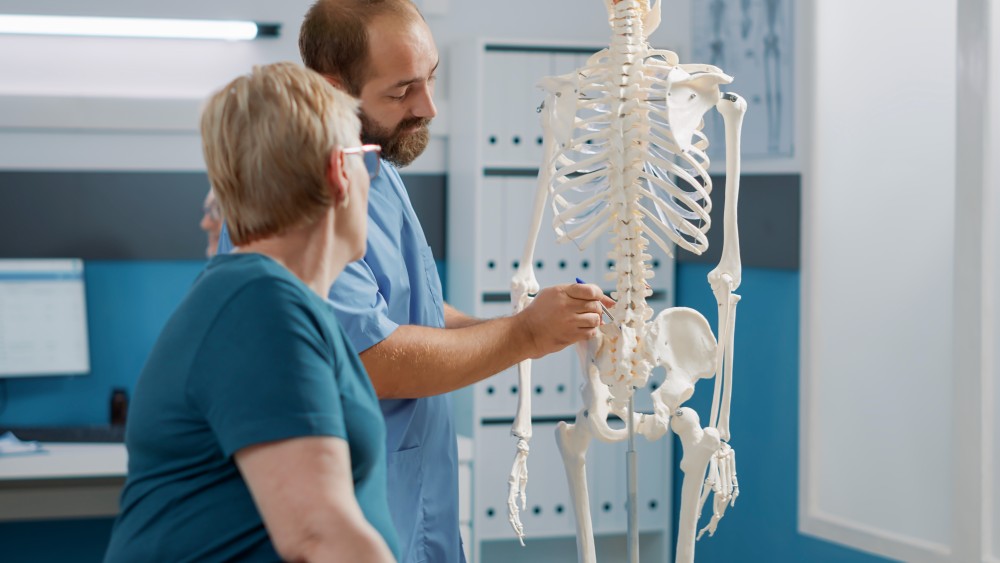From simple daily movements to high-impact activities, our spines are the central support system that enables us to live, work, and play. As an orthopedic surgeon specializing in spinal health, I’ve seen firsthand how a little preventative care can make a world of difference in a person’s quality of life. My work isn’t just about surgical intervention; it’s about educating patients on how to keep their spines healthy and strong for the long term.
The Foundation: Posture and Ergonomics
One of the most common causes of chronic back pain is poor posture. We spend a significant portion of our days sitting—at a desk, in a car, or on a couch—and if we don’t maintain a neutral spine, we place unnecessary stress on our discs and joints. The key is to be mindful. When sitting, ensure your feet are flat on the floor, your shoulders are relaxed, and your back is straight against the chair. For those with desk jobs, consider using an ergonomic chair, a lumbar support pillow, and a monitor at eye level. Small changes in your environment can lead to significant improvements in spinal health.
The Power of Movement: Exercise and Flexibility
A sedentary lifestyle is the enemy of a healthy spine. Regular physical activity, particularly exercises that strengthen the core and back muscles, provides essential support for your vertebrae. Think of your core muscles—the abdominals, obliques, and lower back—as a natural corset for your spine. When these muscles are strong, they help to absorb shock and protect your spine from injury. Activities like yoga, Pilates, and swimming are excellent choices as they build strength and improve flexibility without high-impact stress. Even a simple 30-minute walk each day can have a profound positive effect.
Lifting with Your Legs, Not Your Back
It sounds simple, but improper lifting technique is a frequent cause of acute back injuries. The golden rule is to always lift with your legs. When you need to pick up a heavy object, bend at your knees, not at your waist. Keep the object close to your body and use the powerful muscles in your legs to lift. Avoid twisting your body while lifting, as this can place extreme torque on your spine. If an object is too heavy or awkwardly shaped, don’t hesitate to ask for help.
The Red Flags: When to See a Specialist
While many cases of back pain can be managed with rest, physical therapy, and over-the-counter medication, there are times when it’s crucial to see a specialist. If your back pain is persistent and doesn’t improve with conservative measures, if it radiates down your leg (a sign of sciatica), or if you experience numbness, tingling, or weakness, it’s time to consult an orthopedic surgeon. These symptoms can indicate a more serious underlying issue, such as a disc herniation or spinal stenosis, which may require further evaluation and treatment.
Conclusion
Your spine is an incredible and resilient structure, but it’s not invincible. By prioritizing good posture, engaging in regular exercise, and practicing safe lifting techniques, you can significantly reduce your risk of injury and chronic pain. Remember that a proactive approach to spinal health is the best medicine. By taking care of your spine, you’re investing in a lifetime of mobility, comfort, and well-being.
Frequently Asked Questions
1. What are the best exercises for a healthy spine?
Exercises that focus on core strength and flexibility are ideal. Examples include plank holds, cat-cow stretches, swimming, and low-impact activities like walking or cycling.
2. How can I improve my posture?
Be mindful of your body’s alignment throughout the day. When sitting, keep your back straight and your feet flat. When standing, distribute your weight evenly and keep your head aligned with your shoulders.
3. When should I see an orthopedic surgeon for back pain?
You should see a specialist if your pain is chronic (lasting more than a few weeks), severe, or accompanied by symptoms like numbness, weakness, or radiating pain down your leg.
4. What’s the difference between a slipped disc and a herniated disc?
A slipped disc is a common term for a disc that has moved out of place, while a herniated disc is the more accurate medical term for when the soft inner material of a disc pushes through a tear in its outer layer, which can irritate nearby nerves.
5. Is it possible to avoid spine surgery?
In many cases, yes. Orthopedic surgeons always start with conservative, non-surgical treatments like physical therapy, medication, and injections. Surgery is typically considered a last resort when these methods fail to provide relief.
For more information on spine health and to explore our full range of services, we invite you to visit our website https://orthoxpress.co/locations/lancaster/ . Our team of dedicated professionals is ready to answer your questions and help you on your journey to a healthier spine. To schedule a consultation, please do not hesitate to call us (469) 225-0666.

